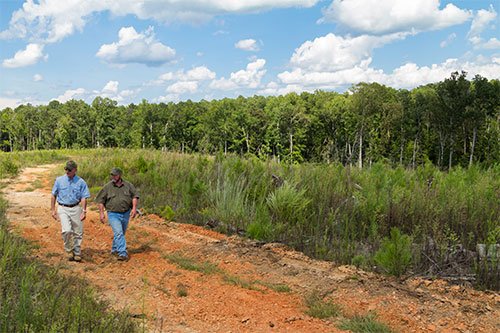Timber Taxation

One of the first questions a prospective buyer of timberland must resolve is deciding upon the ownership structure. In other words, will the property by owned by an individual, a partnership, a corporation, a trust, or limited liability company. Tax treatment for capital gains from the sale of timber differ based on what type of entity holds title to the timberland.
Having an accurate appraisal of the marketable and pre-marketable timber on a recently acquired property facilitates not only the identification of cost-basis in the land and timber but also the future management of the property. In order to accurately calculate the capital gain generated from a timber sale, a landowner must know the value of his timber at acquisition. Long-term capital gains rates can be changed over time and can vary according to the amount of taxable income for the property owner. In early 2018, federal long-term capital gain rates were set at 0%, 15%, and 20% and again pertain to the level of annual income of the landowner. Obviously, these rates are much lower than the regular income tax rates for individuals and should be used by timberland owners to minimize taxes paid on the sale of timber.
Annual management and operating expenses such as property taxes, understory vegetation control, prescribed burning, legal and accounting expenses, boundary line maintenance, and other related expenses may also be deducted depending upon the property ownership structure. Additionally, the Internal Revenue Service has indicated that a landowner must have clear intentions to generate a profit from the property.
Reforestation of cutover timberland can also be a deductible expense depending upon the ownership structure. Costs of site preparation, tree planting, and seedlings may be deductible up to an amount of $10,000 for “qualified timber property”. Any excess amount of reforestation expenses over $10,000 may be eligible for amortization over a six-month period.
Equipment employed to maintain timberland may be subject to a depreciation deduction if the property is categorized as a trade or business or if the property is being held to produce income. Certain improvements on the property such as buildings, fences, bridges, and gates may also be eligible for a depreciation deduction.
Landowners are strongly urged to consult with their personal tax accountants in determining how they should structure the ownership of their timberland and which tax deductions can be legally claimed.
Henderson & Associates understands the tax benefits associated with the ownership of timberland and works closely with our clients and their tax advisors to minimize timber taxation.




